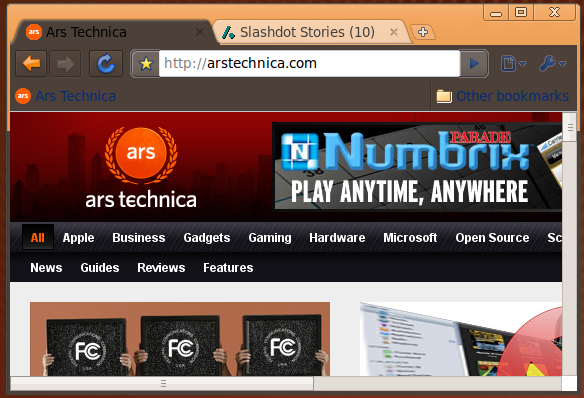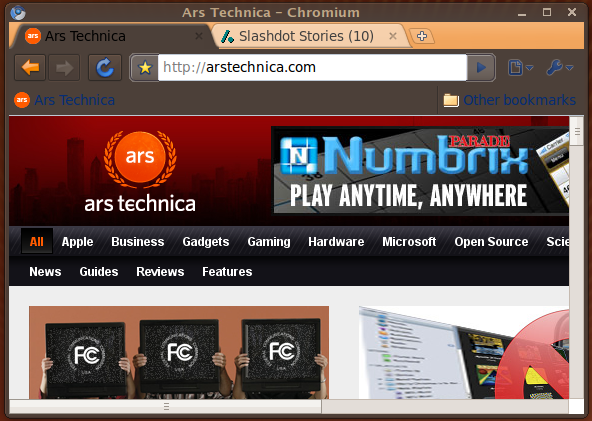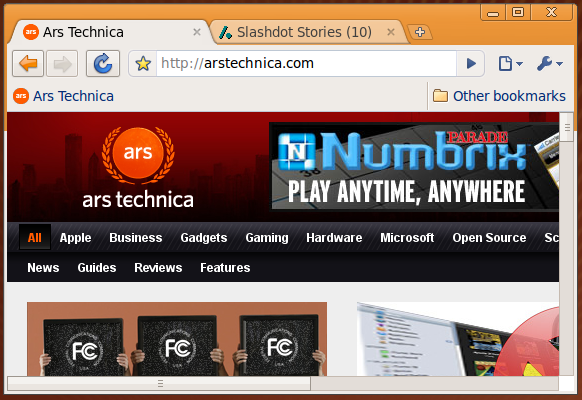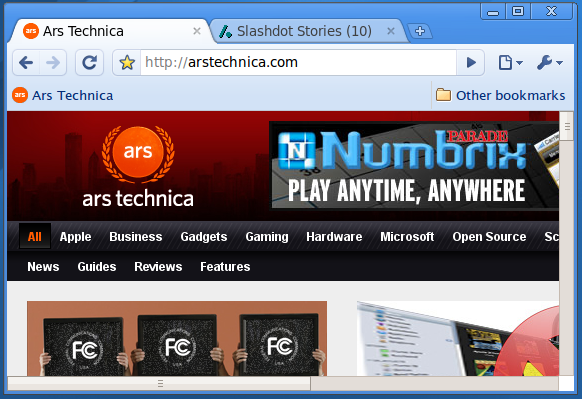
Chromium, the open source development version of Google's Chrome Web browser, recently gained support for native theming on the Linux platform. This reflects the growing maturity of the Linux port and demonstrates the extent to which Google is committed to making Chrome a first-class browser on the Linux platform.
When Chrome was launched last year, it was only available on Windows. Following the initial release, the developers began a porting effort to bring the browser to Linux and Mac OS X. We have closely followed Chromium prereleases on those platforms to keep up with the latest developments. In May, we did a hands-on review of Chromium on Linux using an alpha version. Google has made considerable progress since then and released the first Chrome-branded Linux and Mac versions last month.
As we noted in our review of the Chromium alpha for Linux, one of the major challenges faced by the developers was the lack of a single universal toolkit or set of user interface guidelines for the Linux platform. The inherent diversity of the Linux desktop ecosystem, which has multiple competing toolkits and desktop environments, raises some difficult questions for third-party software vendors. Google eventually decided to commit to using the GTK+ toolkit and has been working to make the browser visually conform to a standard GNOME environment.
In previous builds of Chromium that we have tested on Linux, the browser used GTK+ to render the menus, but the rest of it looked nearly identical to the Windows version. In the latest builds, the browser has a native theming option in the preferences dialog which causes it to adopt the colors and icons of the user's GNOME theme while still retaining the signature skyline tab style. It also has an option on the tab bar right-click context menu that allows users to toggle whether Chromium browser windows will be displayed with the standard GNOME window decorator or the custom Chrome window decorator.
We have tested this with several popular themes to see how well it works. At the current stage, it handles light themes very well but falls down a little bit with dark themes. It adopts standard GNOME icons for the back, forward, and refresh buttons but still uses its own icons for the two menus on the right-hand side of the URL bar.
It's important to note that the screenshots below, which demonstrate theming support with a number of popular themes, are taken with an unofficial Chromium nightly build and not an officially released version. The theming feature is still under heavy active development and could change considerably before it is included in an official Chrome release.
Clearlooks


Crux


Darkroom


Dust


Human


Default theme

I was a little skeptical at first, but after testing several of the themes, I'm convinced that the developers are on the right track. It's definitely a good start and it works reasonably well already, despite being new. Dark themes have traditionally been a trouble area even for conventional GNOME applications, so it's unsurprising that Chromium has some related issues. The only other oddity that really stands out to me is the way that the color only extends halfway down the window frame when the native decorator is disabled. This is probably a minor issue that will be fixed in future builds.
Chrome's excellent performance is attracting the attention of a growing number of Linux users. The browser has the potential to gain a considerable following on the Linux platform if it can continue to deliver this level of performance while additional features are added. The latest theming improvements show that Google's developers clearly care about visual integration, which is a promising sign that we can expect to see good Linux support as the browser evolves.

reader comments
40